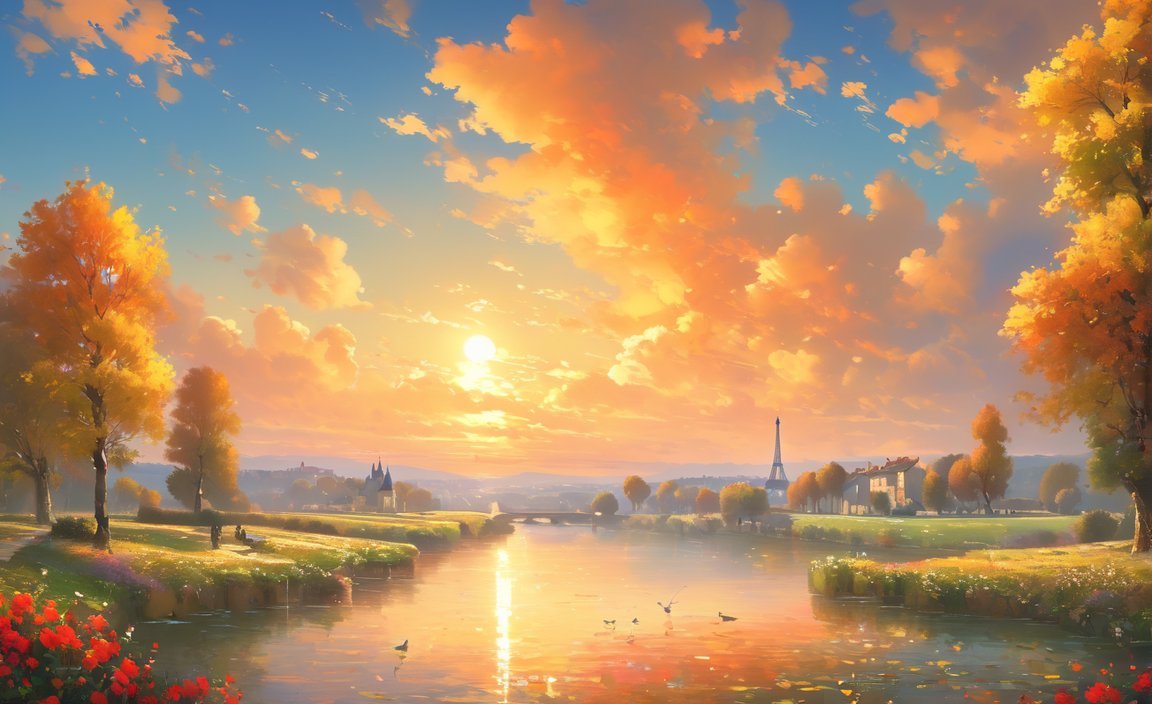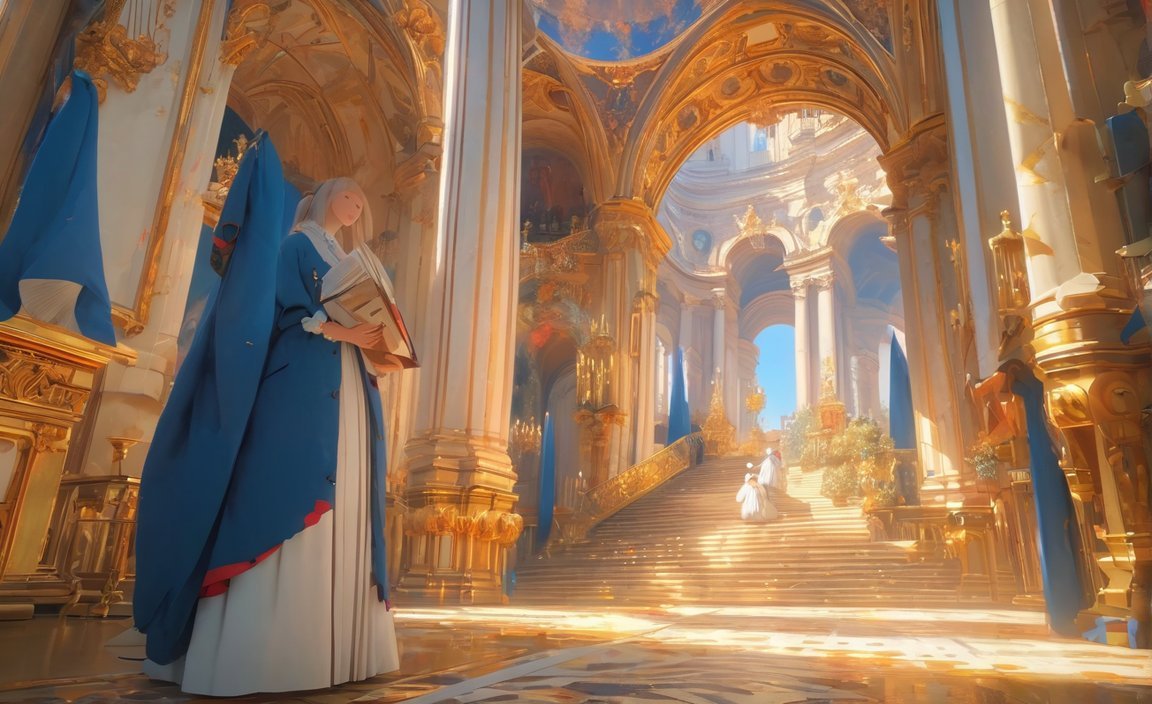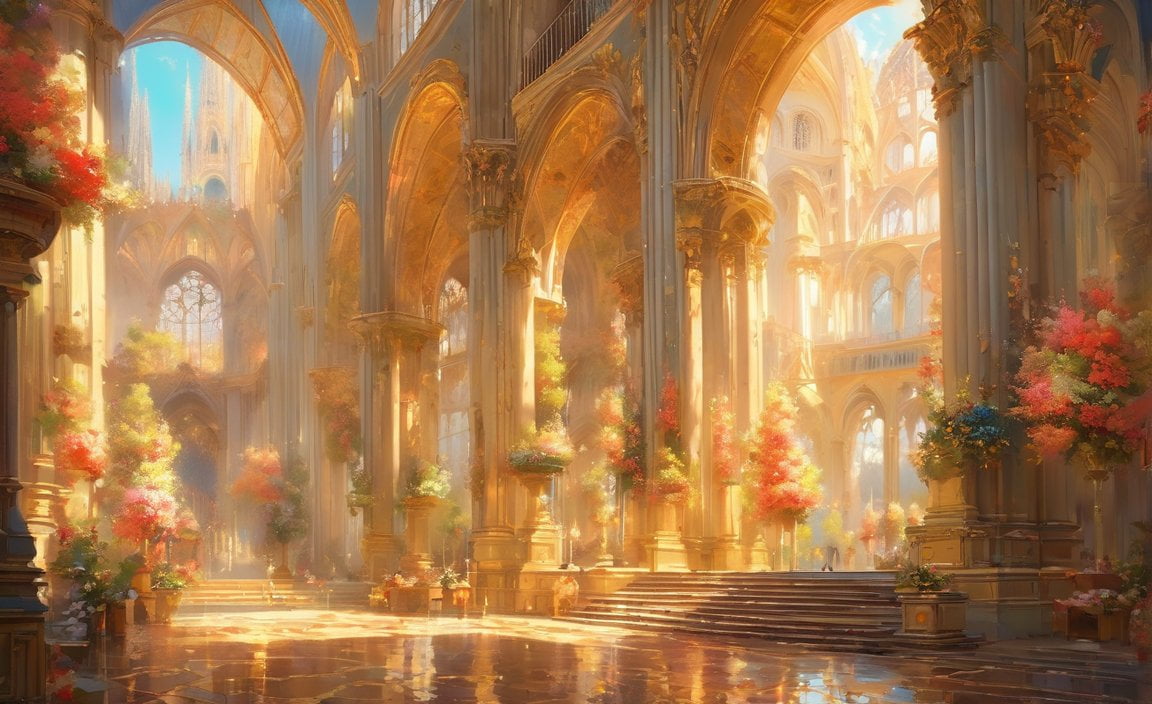Discover the fascinating country of France through these “10 faits sur la France”! As an experienced travel journalist and French culture enthusiast, I am thrilled to provide you with an insightful exploration of the country’s most intriguing facts. From its diverse regions and rich history to its unique traditions and quirks, this article will take you on a captivating journey through the enchanting world of France.
Key Takeaways:
- France is the largest country in the European Union, covering an area of 551,695 square kilometers.
- It is the third-largest country in Europe, behind Ukraine and the European portion of Russia.
- About a third of France is covered in forests, making it the fourth most forested country in the EU.
- France is the world’s most popular tourist destination.
- French was the official language of England for 300 years, from 1066 to 1362.
- The French army was the first to use camouflage in 1915.
- King Louis XIX had the shortest reign in France, lasting only 20 minutes.
- “Égalité” (equality) is one of France’s national mottoes, highlighting its strong emphasis on equality.
- France has produced some of history’s most influential artists.
- Initially, French was not widely spoken, but it spread and eventually became the official language of France.
- France has a unique business culture that values hierarchy and respect for authority.
10 Facts About France in French

Here are some interesting facts that you may not know about the Constitution of India. To find out more about it, click here.
Did you know that energy drinks have some surprising effects on your body? To learn 10 fascinating facts about energy drinks, click here.
Floods can be both devastating and intriguing. Discover 10 facts about floods that will leave you awe-struck by clicking here.
Explore the life and achievements of Henry Ford with these 10 captivating facts. Don’t miss out, click here to learn more.
French Cuisine and Gastronomy
French cuisine and gastronomy are renowned worldwide for their exquisite flavors and culinary traditions. From regional specialties to iconic dishes, France offers a gastronomic experience like no other. Let’s delve into some fascinating facts about French cuisine and gastronomy that will surely whet your appetite for all things French.
The Diversity of Regional Cuisines
France is a country of diverse culinary traditions, with each region boasting its own unique cuisine. From the hearty dishes of Alsace to the seafood delights of Brittany and the Mediterranean flavors of Provence, there is something for every palate. Whether you’re craving cassoulet from the southwest or a buttery slice of tarte Tatin from the Loire Valley, France’s regional cuisines will take you on a delicious journey across the country.
The Art of Long Meals
When it comes to dining in France, be prepared for a leisurely affair. French meals are usually enjoyed over a long period, with multiple courses and breaks in between. It’s not uncommon for a traditional French meal to last several hours, allowing diners to savor each dish and engage in lively conversation. So take your time, relax, and embrace the French art of long meals.
Baguettes: A French Staple
No French meal is complete without a crispy baguette on the side. This iconic bread, with its golden crust and soft interior, is a staple in French cuisine. It’s so beloved that there is even a law in France that regulates the production and sale of baguettes, ensuring their quality and authenticity. So next time you’re in France, don’t forget to indulge in a freshly baked baguette.
The Cheese Obsession
The French take their cheese seriously, and it shows. France is home to hundreds of cheeses with thousands of varieties, ranging from soft and creamy Brie to pungent Roquefort and tangy Comté. In fact, the French eat more cheese than any other country in the world. So join the fromage frenzy and explore the wonderful world of French cheese.
Surprising Origins
Did you know that some classic French dishes have surprising origins? Vichyssoise, a popular pureed potato soup, was actually invented in New York City by a French chef. And while the croissant is synonymous with French pastry, it was originally invented in Vienna, Austria. These culinary cross-cultural connections add an interesting twist to the rich tapestry of French gastronomy.
Delicacies and Delights
France is known for its adventurous palate, with snails (escargots) and oysters being common delicacies. Snails are often prepared with garlic and parsley butter, creating a delectable dish that has become a staple in French cuisine. Oysters, on the other hand, are enjoyed fresh, either on their own or with a squeeze of lemon. These unique delicacies showcase France’s culinary creativity and passion for flavor.
The Concept of Entrée
In French cuisine, the term “entrée” refers to an appetizer or starter, not the main course as it does in other countries. It’s important to note this distinction when dining in France to avoid any confusion. So when you see “entrée” on a menu, think of it as the beginning of a delicious culinary journey.
Key Takeaways:
- French cuisine encompasses a diverse range of regional specialties.
- French meals are known for their leisurely and long-lasting nature.
- Baguettes are an iconic part of French cuisine.
- France is a cheese lover’s paradise with hundreds of varieties to explore.
- Some classic French dishes have surprising international origins.
- Snails and oysters are common delicacies in French gastronomy.
- The term “entrée” refers to an appetizer or starter in French cuisine.
Sources:
– dreamsinparis.com
– thespruceeats.com
France’s Diverse Landscapes and Natural Beauty

France is a country renowned for its rich history, delicious cuisine, and iconic landmarks. However, it’s time to shift our focus to another aspect of France that deserves equal recognition – its diverse landscapes and natural wonders. From breathtaking cliffs to stunning lavender fields, France offers a myriad of natural beauty that will leave you in awe. Let’s explore some of the most remarkable natural landscapes that France has to offer.
Gorges du Verdon: A Natural Wonder in Haute-Provence
One of the top natural landscapes in France is the Gorges du Verdon in Haute-Provence. With its ragged, plunging cliffs and the turquoise Verdon River flowing through, it creates a view that will simply take your breath away.
Aiguilles de Bavella: A Climber’s Paradise in Corsica
Another natural wonder in France that shouldn’t be missed is the Aiguilles de Bavella in Corsica. It offers a thrilling climbing experience and rewards adventurers with picturesque views that will leave an everlasting impression.
Provence’s Lavender Fields: Beauty in Every Shade of Purple
When summer arrives, Provence enchants visitors with its beautiful lavender fields. As far as the eye can see, the vibrant purple hues create a stunning landscape that is sure to captivate your senses.
Côte de Granit Rose: Pink Rocks and Coastal Beauty
Located in Côtes D’armor, the Côte de Granit Rose is known for its pink rocks and stunning coastline. This unique natural landscape offers a mesmerizing blend of colors and textures that will leave you in awe.
Dune Du Pilat: Europe’s Tallest Sand Dune
For an exhilarating experience, head to Pyla-sur-Mer and witness the magnificent Dune Du Pilat, the tallest sand dune in Europe. Climbing to the top rewards you with breathtaking views of the surrounding area and an unforgettable adventure.
Camargue Salt Flats: A Unique Natural Landscape
The Camargue Salt Flats provide a unique natural landscape in France. This area is not only a beauty to behold but also a great spot for bird watching, especially for those eager to catch a glimpse of the elegant flamingos.
Mont Blanc: A Majestic Peak in the French Alps
No list of France’s natural wonders would be complete without Mont Blanc. As the highest peak in Europe, it attracts adventurers from around the world who seek breathtaking views and unforgettable experiences amidst the stunning French Alps.
Étretat Cliffs: Dramatic Scenery in Normandy
Famous for its dramatic and picturesque scenery, the Étretat Cliffs in Normandy create a landscape that seems to be taken straight out of a painting. Their beauty is unparalleled, leaving both visitors and locals mesmerized by their grandeur.
Cirque de Gavarnie: A Natural Amphitheater in Hautes-Pyrénées
Nestled in the Hautes-Pyrénées, the Cirque de Gavarnie offers a natural amphitheater surrounded by towering mountains and impressive waterfalls. This awe-inspiring landscape will make you feel as if you’ve entered a different world.
France: A Tapestry of Diverse Landscapes
France’s diverse landscape is a treasure trove waiting to be discovered. From beautiful beaches to towering mountains and everything in between, this country offers an incredible variety of natural wonders that will leave you speechless.
Key Takeaways:
– France boasts a diverse range of natural landscapes, including breathtaking cliffs, lavender fields, pink rocks, sand dunes, salt flats, and majestic peaks.
– The Gorges du Verdon, Aiguilles de Bavella, Provence’s lavender fields, Côte de Granit Rose, Dune Du Pilat, Camargue Salt Flats, Mont Blanc, Étretat Cliffs, and Cirque de Gavarnie are just a few examples of the incredible natural beauty found in France.
– France’s natural landscapes are often overshadowed by its man-made landmarks, but they deserve equal recognition and exploration.
– Whether you’re a nature enthusiast or simply appreciate the beauty of the outdoors, France will captivate you with its stunning and diverse landscapes.
Sources:
– Culture Trip
– Lonely Planet
French Art, Literature, and Fashion
France is a country with a rich cultural heritage, and it has made significant contributions to the world of art, literature, and fashion. From iconic masterpieces to influential literary works, France has a long-standing tradition of creativity and innovation. In this article, we will explore some interesting facts about French art, literature, and fashion.
French Art: A Beacon of Creativity
French art has flourished throughout history, and the country has been at the forefront of artistic movements. From the Renaissance to Impressionism, France has been a hub for artistic expression. Notable artists such as Claude Monet, Vincent van Gogh, and Henri Matisse have left an indelible mark on the art world with their groundbreaking works.
France is also home to world-renowned art museums, including the Louvre and Musée d’Orsay. These institutions house exquisite collections that showcase the evolution of art over the centuries. Whether you are a fan of classical paintings or contemporary sculptures, French art offers something for everyone.
Literature: Words that Transcend Time
French literature has a rich and diverse history, with renowned authors shaping the literary landscape. From Victor Hugo to Marcel Proust, French writers have created masterpieces that have stood the test of time. Their works have explored profound themes such as love, loss, and human nature, captivating readers around the world.
One of the most enduring literary figures is Jean-Paul Sartre, renowned for his existentialist philosophy and thought-provoking plays and novels. Alongside Sartre, Simone de Beauvoir, his partner and a brilliant writer herself, contributed to the feminist movement through her influential works.
French literature has also given rise to literary genres such as the “roman-fleuve,” a multi-volume novel that follows the lives of complex characters in intricate storylines. This genre, popularized by authors like Émile Zola, allows readers to delve deep into the lives and struggles of the characters.
Fashion: Where Style Meets Art
When it comes to fashion, France sets the bar high. The country has been a global leader in the industry for decades, with fashion houses like Chanel, Dior, and Yves Saint Laurent shaping trends and defining elegance. French fashion is renowned for its sophistication, timeless designs, and attention to detail.
Paris, the fashion capital of the world, hosts the iconic Paris Fashion Week, where designers showcase their latest collections. This event attracts industry professionals, celebrities, and fashion enthusiasts from around the globe, cementing France’s position as a trendsetter.
French fashion goes beyond clothing; it encompasses accessories, perfumes, and cosmetics. French perfumes, such as Chanel No. 5 and Dior J’adore, have become iconic and remain timeless fragrances that symbolize elegance and luxury.
Key Takeaways:
– French art has played a significant role in shaping artistic movements and has been home to renowned artists.
– France boasts world-renowned art museums like the Louvre and Musée d’Orsay, which house remarkable collections.
– French literature has produced influential writers like Victor Hugo and Marcel Proust, whose works continue to resonate with readers.
– Jean-Paul Sartre and Simone de Beauvoir have made significant contributions to French literature and philosophy.
– French fashion is synonymous with elegance and sophistication, with iconic fashion houses and Paris Fashion Week leading the industry.
SOURCES
– Britannica. “France – Art, Culture, History.”
– Langster. “10 Things You Need to Know About French Culture.”
FAQ
Q1: Quels sont les faits les plus surprenants sur la France ?
A1: Voici quelques faits surprenants sur la France :
– La France est le pays le plus visité au monde.
– L’armée française a été la première à utiliser le camouflage en 1915.
– Louis XIX a détenu le règne le plus court en tant que Roi de France, ne durant que 20 minutes.
– La France a une forte emphase sur l’égalité, avec “égalité” étant l’une des devises nationales.
– La France produit certains des artistes les plus influents de l’histoire.
Q2: Quelle est la taille de la France par rapport aux autres pays européens ?
A2: La France est le plus grand pays de l’Union européenne, couvrant une superficie totale de 551,695 kilomètres carrés. Elle est le troisième plus grand pays en Europe, derrière l’Ukraine et la partie européenne de la Russie.
Q3: Quelle est la réputation de la France en matière de cuisine ?
A3: La France est réputée pour sa cuisine raffinée et gastronomique. Les Français ont une cuisine régionale variée et chaque région a sa propre spécialité culinaire. De plus, les Français sont connus pour prendre leur temps lors des repas, avec des repas qui peuvent durer plusieurs heures. La France est également le pays qui consomme le plus de fromage au monde.
Q4: Quels sont quelques-uns des paysages naturels spectaculaires de la France ?
A4: La France est connue pour ses paysages naturels à couper le souffle. Voici quelques exemples :
– Les Gorges du Verdon en Haute-Provence, avec ses falaises escarpées et la rivière turquoise du Verdon, offrent une vue magnifique.
– Les Aiguilles de Bavella en Corse offrent une expérience d’escalade palpitante et des vues pittoresques.
– La Provence est célèbre pour ses champs de lavande, qui créent un paysage magnifique, surtout en été.
– La Côte de Granit Rose dans les Côtes d’Armor est connue pour ses rochers roses et sa magnifique côte.
– La Dune du Pilat à Pyla-sur-Mer est la plus haute dune de sable d’Europe et offre une expérience excitante pour les visiteurs.
– Les Salins de Camargue sont un paysage naturel unique et un excellent endroit pour observer les oiseaux, en particulier les flamants roses.
– Le Mont Blanc dans les Alpes françaises est un incontournable pour les aventuriers, car c’est le plus haut sommet d’Europe et offre des vues à couper le souffle.
– Les falaises d’Étretat en Normandie sont célèbres pour leur paysage dramatique et pittoresque.
– Le Cirque de Gavarnie dans les Hautes-Pyrénées est un amphithéâtre naturel entouré de montagnes imposantes et de cascades.
– La France a un paysage diversifié, avec de magnifiques plages, des montagnes imposantes et une variété de merveilles naturelles à découvrir.
Q5: Quels sont les domaines des arts et de la culture les plus célèbres en France ?
A5: La France est renommée pour ses riches traditions dans les beaux-arts, y compris la peinture, la sculpture, la musique, la danse, l’architecture, la photographie et le cinéma. Le pays a une longue histoire avec les arts et la littérature, et certains des artistes et écrivains les plus célèbres du monde viennent de France. La peinture et la sculpture françaises ont une longue tradition et ont produit des œuvres remarquables. La musique classique en France a également une histoire substantielle, avec des compositeurs notables tels que Louis Couperin, Jean-Philippe Rameau et Jean-Baptiste Lully. La culture française est également connue pour son étiquette formelle, son attachement aux traditions familiales et son importance accordée à la langue.
- SYBAU See You Baby Meaning: Gen Z Slang Evolves - July 1, 2025
- Unlock Your Inner Youth: Lifestyle Secrets for a Vibrant Life - July 1, 2025
- Decode SYBAU Meaning: Gen Z Slang Explained - July 1, 2025






